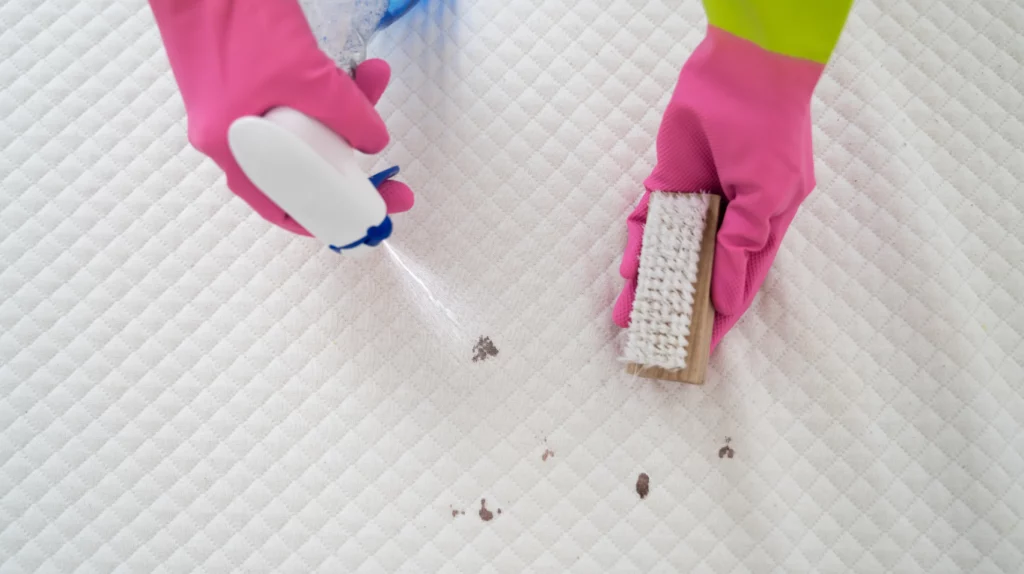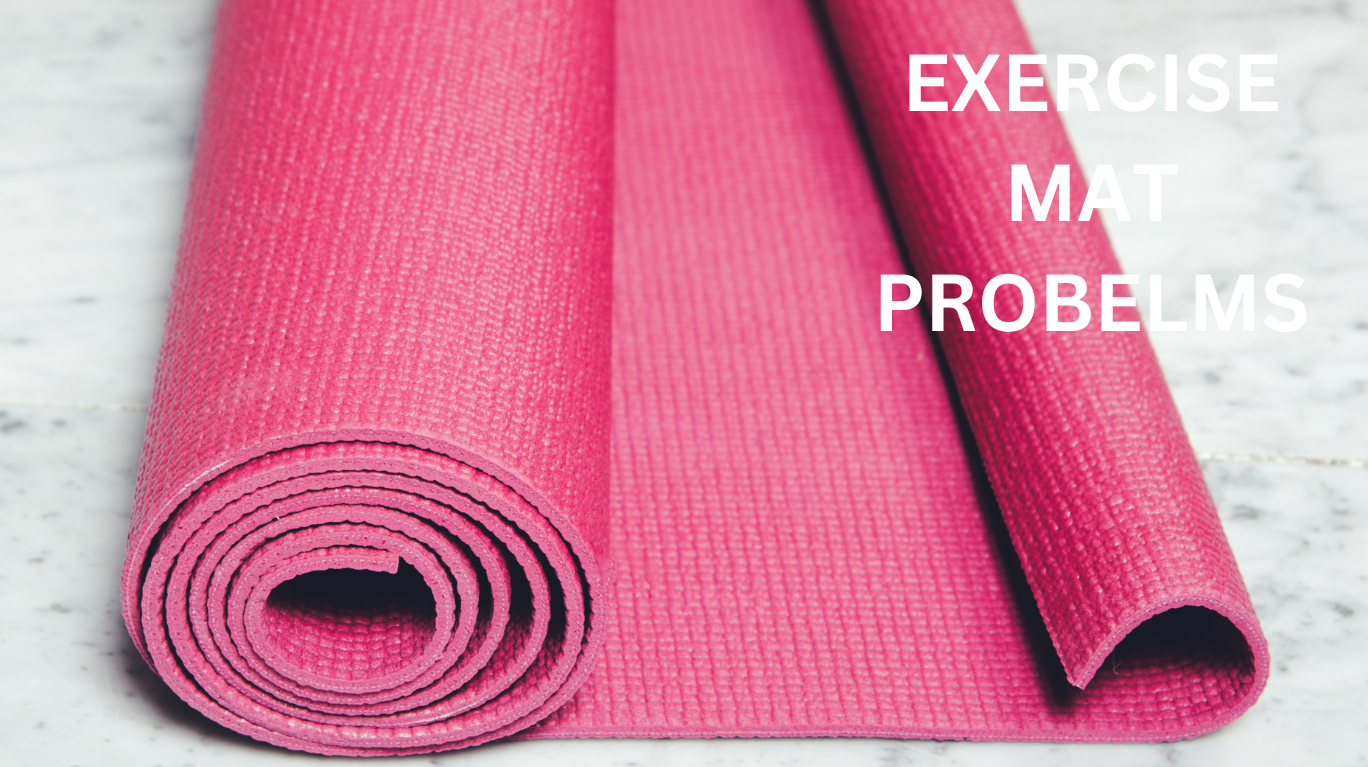If you’re like most fitness enthusiasts, you probably use an exercise mat for your workouts. Whether it is yoga, Pilates, or HIIT, a good mat can provide comfort, support, and stability. But what if your mat is giving you more trouble than benefits? What if it’s too slippery, too smelly, too thin, or too worn out? How can you fix these common exercise mat problems and enjoy your workouts again?
In this blog post, we’ll show you how to troubleshoot common exercise mat problems and their solutions. You’ll learn how to clean, maintain, and replace your mat as needed. You’ll also discover some tips and tricks to make your mat last longer and perform better. By the end of this post, you’ll have a clear idea of how to solve your exercise mat issues quickly and easily. So let’s roll out the solutions, one mat problem at a time!
Common Exercise Mat Problems and Their Solutions
The exercise mat, an excellent companion for your daily workouts, is more than just a piece of equipment. It provides cushioning to your body, enabling comfort while performing various exercises whilst protecting you from the harshness of the floor.
However, exercise mats are not immune to wear and tear, and they can develop some common problems over time. If left untreated, these problems can affect the quality and safety of your workout, as well as the lifespan of your mat. That’s why it’s important to address them as soon as possible and prevent them from getting worse.
Here we’re going to discuss the 07 most common exercise mat problems and their solutions. By following these tips, you can keep your mat in good condition and enjoy its benefits for longer.
1. Mat Crumbling
The crumbling of an exercise mat involves the breakdown of its outer layer, triggered by factors like friction, heat, moisture, and mat aging. This degrades its quality and comfort, making your workout less efficient. Plus, it makes your mat look old and dirty, and can also create a mess on your floor.
Prevention Tips
Here are some tips to prevent or reduce mat crumbling:
- The mat crumbling issue can be abated by investing in a high-quality, durable mat.
- Routing cleaning and drying keep moisture and heat-induced damage at bay and extend the mat’s longevity.
- Proper storage also plays a role, so aim for a cool, dry area and roll the mat loosely, rather than folding, to avoid pressure points.
2. Slipperiness
Slipperiness is when your mat becomes too smooth or slick to provide enough traction for your feet and hands. The main culprits of mat slipperiness include sweat, oil, and dust. A slippery mat can transform an efficient workout into a risk-filled session.
Quick Solutions
To prevent mat slipperiness follow the tips, such as:
- To prevent unwanted slips and injuries, use a towel or mat cover to absorb moisture and enhance grip.
- Additionally, spraying your mat with water or vinegar can boost traction.
- Regular cleansing of the mat with mild soap and water removes grime and residue and can significantly improve grip.
- And don’t shy away from using your mat! The more you use it, the better the grip becomes, a tip known as the ‘breaking-in’ process.
3. Lingering Odors
Lingering odors are when your mat smells unpleasant or stale due to bacteria, mold, or mildew growth on your mat. This can happen due to insufficient drying, ventilation, or cleaning of your mat. These unpleasant odors emanating from your mat can make your workout less enjoyable and unhygienic.
Odor-Busting Techniques
To prevent or reduce mat odors, you should:
- Adopt a routine of regularly spraying your mat with a natural or homemade deodorizer after each use to combat this problem at its root.
- Always ensure your mat is completely dry before storing – a well-ventilated area is ideal for this.
- Avoid harsh chemicals which could irritate your skin or respiratory system.
- Try odor-eliminating substances like baking soda or tea tree oil to naturally eliminate odors.
4. Fading and Discoloration
Fading and discoloration are when your mat loses its original color or brightness and looks more ‘used’ than you’d like. It happens due to fading agents such as sunlight, bleach, or dye transfer from other fabrics. This can make your mat look dull and unattractive, and can also affect its durability.
Solutions for Fading and Discoloration
The following are some solutions to prevent mat fading and discoloration:
- Keep your mat away from direct sunlight or artificial light sources that can cause fading.
- Avoid using bleach or other harsh chemicals that can cause discoloration. Use only gentle cleaners that are safe for colored fabrics.
- Wash your mat separately from other items that may bleed color onto it.
- It is recommended to use cold water and gentle detergent to preserve the color of your mat.
5. Mat Stains
Another common problem that exercise mats face is staining. Stains can be caused by various factors, such as dirt, food, drinks, makeup, blood, or other substances that come into contact with your mat. Stains can make your mat look dirty, unhygienic, and unappealing. They can also harbor bacteria and odors that can affect your health and wellness.

Stain Removal Strategies
To prevent stains from ruining your mat, you should follow these tips:
- Act quickly and blot the stain with a paper towel or cloth before it sets in.
- Use an appropriate stain remover that is suitable for your mat material and type of stain.
- Scrub gently with a soft brush or sponge to loosen the stain. Do not use harsh or abrasive tools that can damage your mat surface.
- Remember to rinse thoroughly to remove any residue left behind.
6. Edges and Corners Curling
Curling edges and corners is also a common exercise mat problem. Curling occurs when your exercise mat starts to bend or roll up, usually caused by improper storage, humidity, or uneven pressure on your mat. It can disrupt your workout and cause tripping hazards.
Fixing Mat Curling
Here are some tips to prevent the mat’s edges and corners from curling:
- Roll your mat tightly and evenly from both ends before storing it flat or vertically.
- Place some heavy books or objects on the edges or corners of your mat for a few hours to flatten them out.
- Iron your mat in a low heat setting to smooth out any wrinkles or bumps.
- Stretch your mat gently by pulling on the edges or corners to restore its shape and elasticity.
7. Small Tears and Scratches
The last most common exercise mat problem is mat tearing and scratching. Tearing or scratching can be caused by sharp objects, nails, or pets that come into contact with your mat. This can affect the integrity and strength of your mat and create holes or gaps that can trap dirt or moisture.
DIY Repair Methods
Here are some DIY methods to repair small tears and scratches on your exercise mat:
- Trim any loose threads or fibers that are sticking out of your mat with scissors. Do not pull or tug on them, as this can make the tear worse.
- Seal small visible tears or scratches using glue or tape to prevent further damage. You can also use some tape or patches to cover the tear.
- In case of irreparable damage, mat replacement should be considered.
Conclusion
In summary, maintaining optimal conditions of your exercise mat can profoundly affect your workout experiences, ensuring safety and satisfaction. This article highlighted common exercise mat problems faced by mat users and provided easy fixes. By following these simple tips, you can solve these common exercise mat problems and keep your mat in good condition.
Do you have any other tips, questions, or feedback on how to maintain your exercise mat? Feel free to share them in the comments section below.
Common Queries
Why do I need an exercise mat?
You need an exercise mat to provide cushioning, support, and grip for your body and prevent injuries or discomfort during your workout. In addition to maintaining your body temperature, an exercise mat also helps protect your floor from damage.
How can I prevent my exercise mat from sliding?
To prevent the exercise mat from sliding, place it on a non-slip surface or use a mat with a non-slip bottom. If your mat continues to slip, consider placing a towel, rug, or piece of carpet underneath it to increase friction.
What are the key features of a good exercise mat?
A good exercise mat should be durable, have a non-slip surface, offer good cushioning, and be easy to clean.
How durable is an exercise mat?
An exercise mat’s durability depends on the material and usage. High-quality mats can last for several years with regular use.
When should I replace my exercise mat?
You should replace your exercise mat when it starts wearing thin, losing grip, or showing signs of damage such as tears or cracks.

